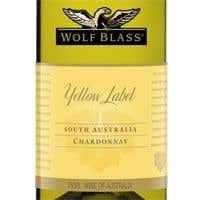From £6.66, US$8.99, €9.99, CNY159
Find this wine
Many different things do a wine of the week make. It might be made from a particularly novel grape variety, or display excellent value; hail from an exciting new region, or from a legendary winemaker. So perhaps you are wondering if a big brand such as Wolf Blass Chardonnay really needs such exposure.
I wondered about that myself, but the truth is, this wine deserves genuine praise, for many reasons, and one of the most compelling for me is related to how I recently encountered it: in a blind tasting in my MW exam. I concluded it was a premier cru Côte d’Or for around £20. On discovering its true identity soon after, my feelings were mixed, to say the least: I was horrified at getting the wine so wrong – but delighted that something so inexpensive tasted so good.
Now, exam conditions can do peculiar things to your mind, so I tasted it again last week, before and during a meal, for a second opinion. And it is really very pleasing indeed. The most striking thing about the style is its restrained fruit, dry mineral character and extremely subtle oaking. You could genuinely mistake it for a burgundy. (Oh, and hello to any MW examiners out there. Cough.)
Until four years ago, Wolf Blass Yellow Label Chardonnay was labelled as barrel fermented. I remember it from my first years in the wine trade as one of the oakiest of them all – buttery, heavy, sweet, confected – the kind of Chardonnay people loved to hate. Now, it is dry (with just 2.3 g/l residual sugar [correction – 2.0 g/l RH, 27 Aug 11]), medium bodied at 13%, with only partial malolactic fermentation (with total acidity of 6.2 g/l) and an oak regime much changed from its past.
Yes, that regime probably involves oak chips or staves, and yes the acidity has almost certainly been adjusted. I have absolutely no problem at all with that, so long as the resulting wine remains well balanced, tasty and authentic. Funnily enough, authenticity is perhaps its one major failing, because it really doesn’t taste like New World Chardonnay as most people think of it. But the balance and tastiness is most definitely in place.
That makes for a subtle, quite neutral fruit character with a definite cool-climate daintiness. The flinty, mineral tang shows terroir enough to please the staunchest Francophile. It’s a versatile food wine thanks to the juicy acidity, and the faintest crackle of oak on the finish gives complexity. I scored it 16.5 – and I see that Jancis did likewise, in March last year. See also her previous paeans of praise to restrained Australian Chardonnay in the shape of Chardonnays – Oz v the rest and Whither Australian Chardonnay?
For a large-volume, globally distributed brand that is no mean feat, and it’s great to have a reliable, good-value, fall-back wine to look out for in times of need. More than that though, this is the perfect example of what Australian wine does so well: reliable, easy-drinking, well-composed, delicious wines with broad appeal.
Anyone that scoffs at the thought of either Aussie Chardonnay or big brands should try this – or even better, be presented with it blind.
Find this wine
19 Aug 2011
Wolf Blass, Yellow Label Chardonnay 2009 South Australia

